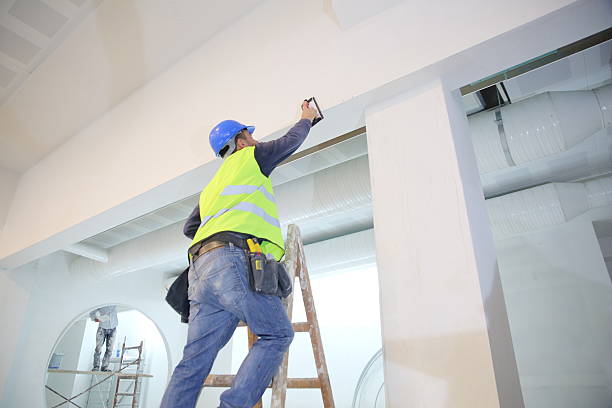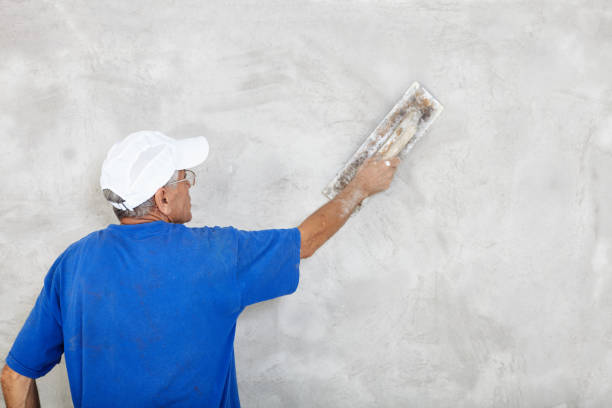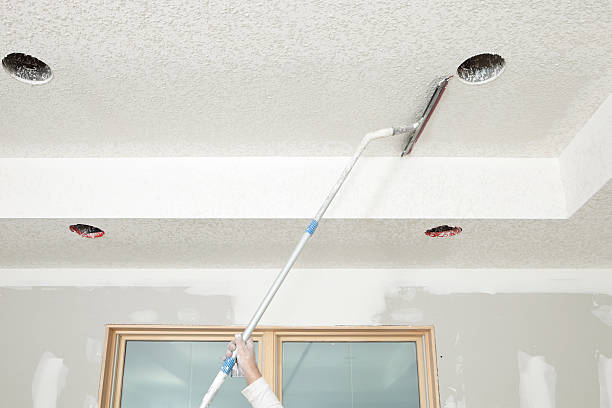
Drywall textures are often applied due to necessity. Given the opportunity, most homeowners would prefer their ceilings and walls to have a smooth, glassy texture. Apart from being one of the most preferred styles today, smooth-textured walls help color stand out a little better since there aren’t any ridges casting shadows on the wall, making the surface look brighter.
However, wall textures do have the distinct benefit of being an effective and efficient way of finishing drywalls without having to worry about the endless cycles of sanding, curing, and mudding the walls. drywall texture is often used to cover up imperfect mudding or drywall work. The good thing about the materials used for texturing is that they dry quickly, meaning that you can start painting your walls in just a few hours.
Another great thing about wall texturing, aka wall stippling, is that it can be applied using a roller and the materials are easy to obtain and quite affordable.

Drywall Texture: What Is It and How Does It Work?
The materials used for texturing a wall are thicker than paint but a lot thinner than drywall compounds. Texture applied to ceilings and walls creates small shadows due to the depressions and bumps. While the shadows mostly disappear when light is shone directly on them, they generally grow longer as the light source illuminates them from an angle, causing shades that make the surface look dark.
The good thing about this darkening effect is that it hides surface imperfections quite well. If your wall has visible depressions, bulges, seams, and other imperfections, wall texture can help keep them hidden. This is one of the reasons why most ceilings are texturized; since ceilings receive the most amount of light, it can be difficult to hide imperfections.
Drywall texture is something that you can do as DIY as all you need are the right tools and equipment and time. Here is a look at some of the things that you will need to texture your drywall or ceiling.
Tools/Equipment
– Plastic sheeting
– Paint roller and cover
– Drop cloths
– Paint tray
– Drywall knife
– Paintbrush
– Drill and paint mixer attachment
– 5-gallon bucket
Materials:
– Drywall compound
– Paint
– Flat paint or drywall primer
– Painter’s tape

Spray Sand Ceiling Texture

Spray sand ceiling textures are exactly what they sound like! With this option, sand is mixed with water, primer, and in some instances, a very thin type of mud. This mixture is then sprayed on the ceiling’s surface using a hopper gun. When done right, the surface gets a textured finish that does not separate neither does it crack. This option is often used to provide a subtle accent and is generally applied on ceilings; though it can be used on walls too!
Knockdown Drywall Texture
Knockdown refers to textures that are applied and knocked down on the surface by dragging a drywall knife over the material, flattening it. The procedure is also known as stomp knockdown or spray knockdown. The difference between this texture and others lies in how it is applied. Knockdown textures create a subtle effect; the shadowing isn’t as prominent on the surface as with other options. While drywall knives can be used to knock down the material, there are specialty tools that you can use to achieve a perfect finish.
When Should You Call a Professional?
If the area that you need texturing is quite substantial, then you should consider hiring a professional and have them texture your wall or ceiling using an air-compressor-powered texture sprayer. The good thing with this option is that knock-down, fog, splatter, and orange peel effects can all be achieved using sprayers. Application is fast and the application only takes a matter of hours to dry.
